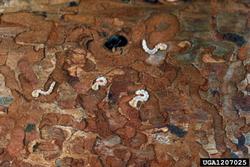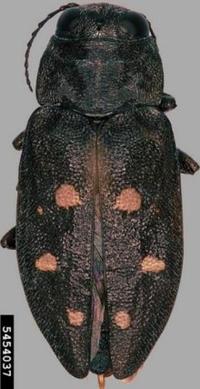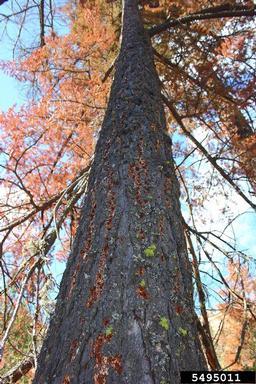Flatheaded fir borer (Phaenops drummondii)
Trees Affected


Common Hosts: Douglas-fir, true firs
Occasional Hosts: Spruce, western hemlock, pines
Summary

Local Distribution


Widespread.
Management Strategies
Woodpeckers and parasitic wasps are natural predators of the flatheaded fir borer, so providing suitable habitat for these animals may be helpful. Management strategies vary by site, but avoiding additional stressors such as soil compaction and backfilling over roots is generally recommended. Since water-stressed trees are less able to produce enough resin to defend against insect attacks, reducing water stress via thinning or other methods can be another viable strategy.
Pests and Pathogens with Similar Symptoms
Douglas-fir beetle (Dendroctonus pseudotsugae): This beetle causes similar crown symptoms and is the other beetle that can kill large, healthy Douglas-firs in this region. However, unlike the flatheaded fir borer, Douglas-fir beetle exit holes are often accompanied by orangish boring material. Additionally, the Douglas-fir beetle makes galleries in the wood itself instead of on the inner side of the host’s bark.
Further Reading
Overview of biology, damage, and management:
https://www.oregon.gov/ODF/Documents/ForestBenefits/FFB_2016.pdf
